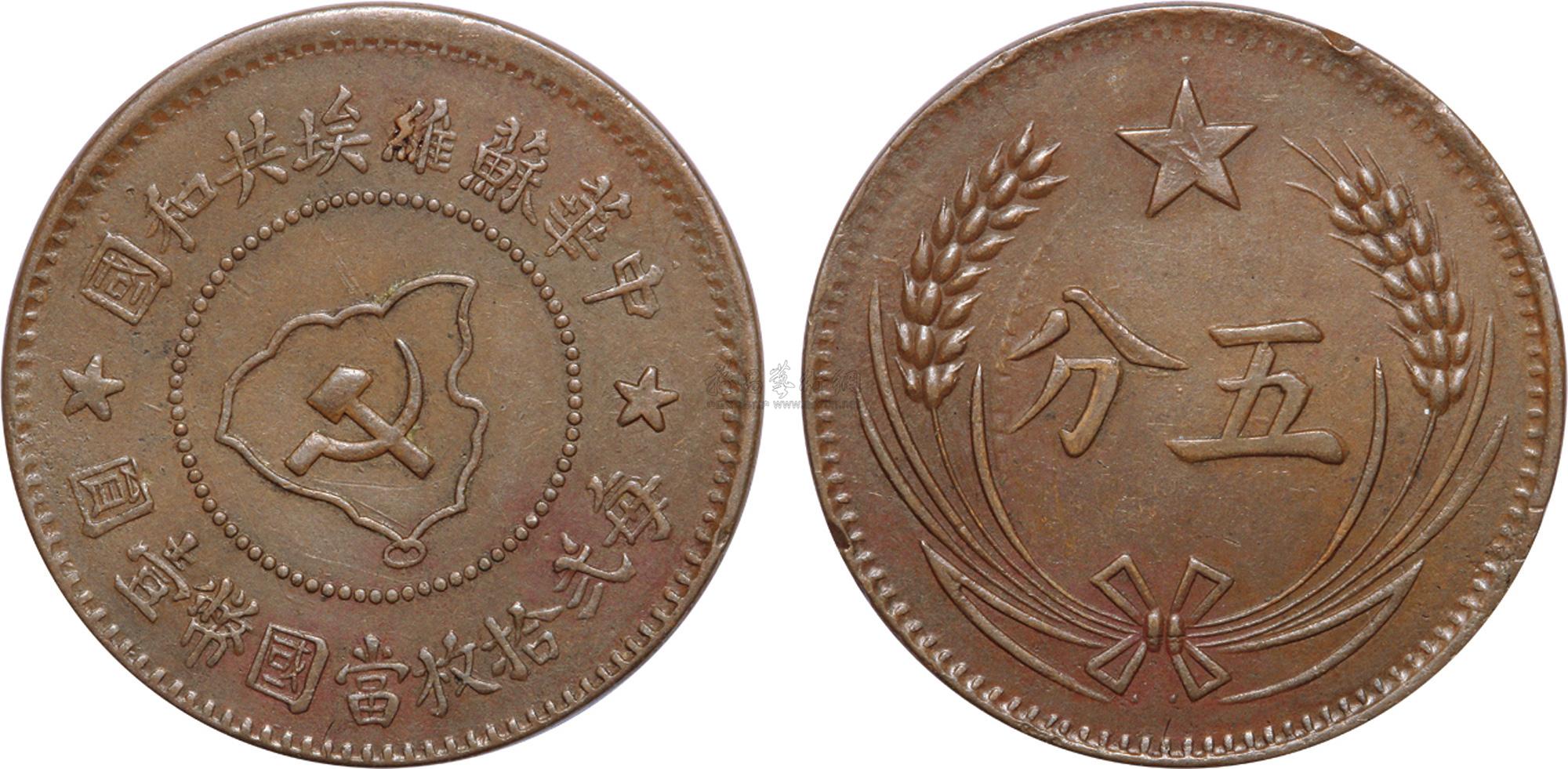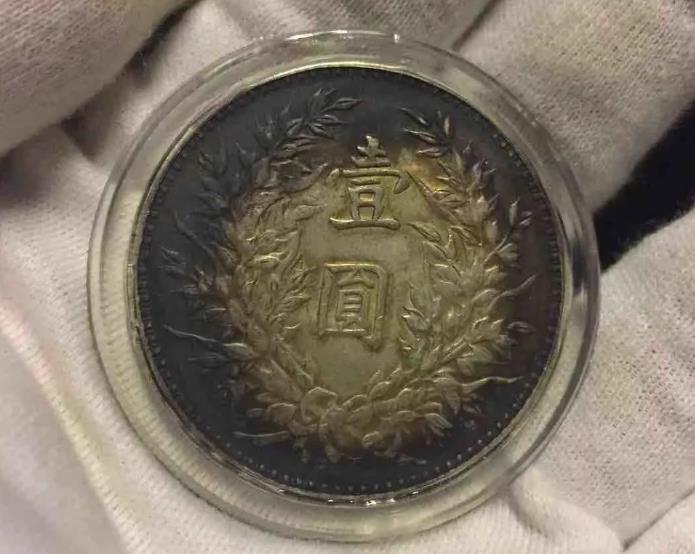When everyone talks about silver dollars, they basically think that they were issued during the late Qing Dynasty and the Republic of China. However, in the early days of the founding of the People’s Republic of China, a number of silver dollars were minted. At that time, the domestic economy was still unstable, and the popularity of RMB was still low. It’s not very big, so it can only be forced to mint silver dollars to stabilize the market. Later, the renminbi gradually became popular, and the circulation of silver dollars was stopped after the economy stabilized. This post-minting is not a counterfeit currency, but a product of a special period. It was minted by an official foundry. .
Three Years of the Republic of China Yuan Big Head Triangle Round Version
In May 1949, to stabilize the situation in the financial sector in Northeast China, the engraver Zhou Jianxiang was selected to modify the original model of Yuan Datou in the third year of the Republic of China. The round character was changed to a triangle circle, and the epaulettes were changed. The word “one circle” was thick, etc. In subtleties, the triangle circle has now become a big version of Yuan’s head, and the triangle circle can be subdivided into more than a dozen seed versions.
In February 1951, the Chengdu Mint was established. The Shenyang Mint was modified for the Chengdu Mint and the original model was used to produce triangles. Production was carried out in April 1951. After 1954, the casting was stopped. This triangular and round version is very popular in the collection market. If you encounter a triangular and round version in the future, you must collect it, but don’t think it is a counterfeit coin.

Yuan Datou Hainan Edition
The Hainan version is also known as the Qiong version. In November 1949, on the eve of the liberation of Guangdong by the People’s Liberation Army, the Kuomintang government was forced to relocate the No. 1 Mint in Guangdong Province to Haikou City, Hainan Island, and began to cast a relatively low silver content in the Republic of China. Yuan Datou, Sun Xiaotou and the 23-year ship-like silver dollar.
Yuan Datou had long been ordered by the Kuomintang government to stop casting Yuan Datou in 1927, but in a special period in the future to stabilize the economy and stabilize the people’s sentiment, he was forced to recast Yuan Datou, because Yuan Datou’s reputation among the people is very good. The Hainan version of the nine-year version has the characteristics of a refined version, but the currency is blurred, the fonts and patterns are thick, and the casting capacity may be mostly reduced due to the tightness of the form.

Beiyang 34 years and Jiangnan Jiachen
In the 34th year of the Longyang, both the Beiyang and the Jiangnan Jiachen were about the same, and it was difficult to understand that there were many layouts. In fact, in the 34th year of Guangxu, that is, in 1908, the Emperor Guangxu and the Empress Dowager Cixi died one after another. In the following year, the Yuan Xuantong was changed. It is reasonable to say that the number of silver dollars in Beiyang in 34 years would not be the largest. However, the Xuantong Dynasty and the early Republic of China a large number of post-casts did not change this situation until the emergence of Yuan Datou in the third year of the Republic of China (1914).
Jiangnan Jiachen is the silver dollar cast in Jiangnan. From the first year of the Republic of China to the fourth year of the Republic of China, more than 80 million pieces of Jiangnan Jiachen were cast, resulting in a large number of Jiangnan Jiachen.

Soviet Copper Coin
There are a lot of Soviet one-cent and five-cent copper coins cast after 1960. This post cast is different from the previous one. This post cast is said to have been cast by no one. When the transfer to Yan’an in 1947, Hu Zongnan got part of the Soviet copper coin. Steel film. This steel film was taken by the United States in the 1950s. In 1959 and 1960, a batch of original molds were recast. The number is very large. Nowadays, most of the Soviet copper coins on the market are post-cast. There is another saying that the United States imitated the original mold. It is hard to say which one is true or false.
For post-mint coins, most of them were produced during special periods, including a batch of silver dollars after the founding of the People’s Republic of China. Post-mint coins are not counterfeit coins, and most post-mint coins are very worth collecting, and the market price is different. Low, except for post-Soviet coins.


